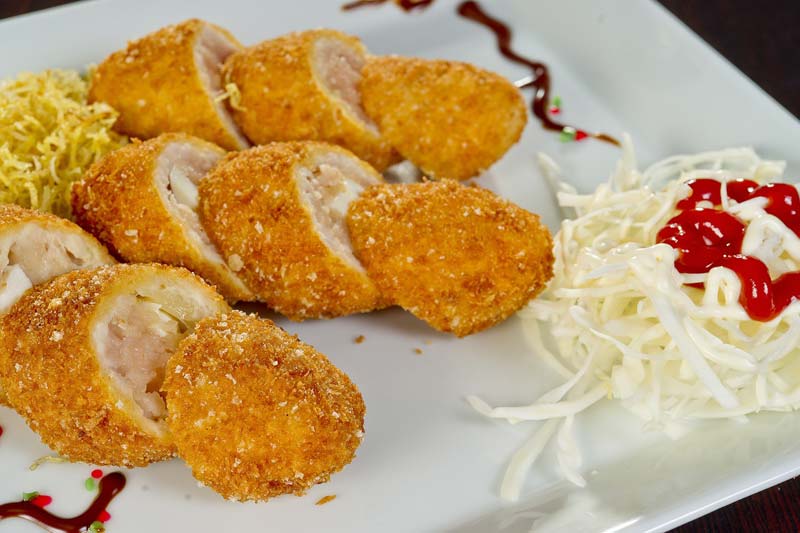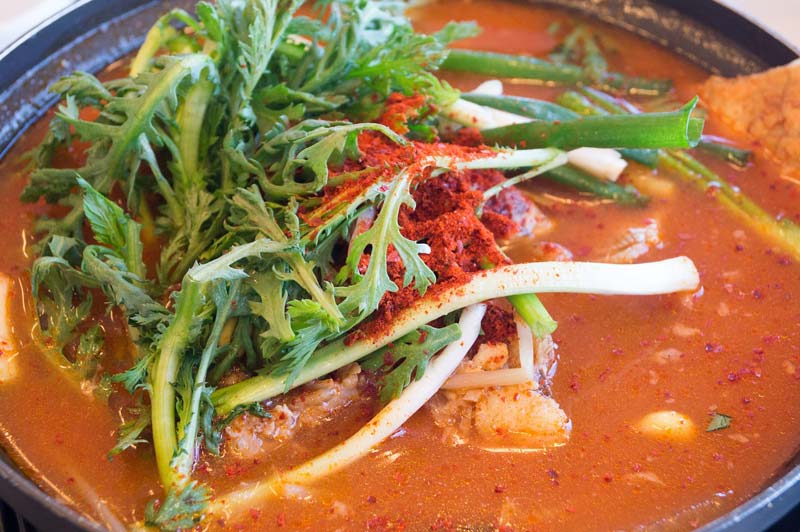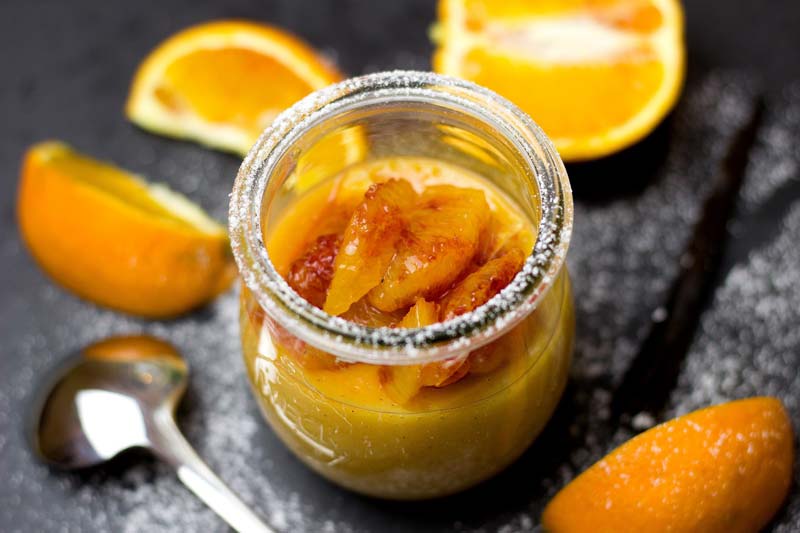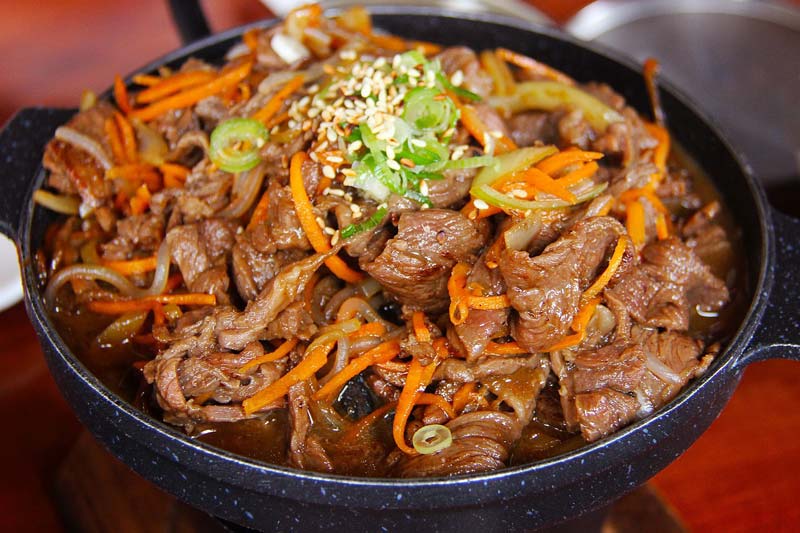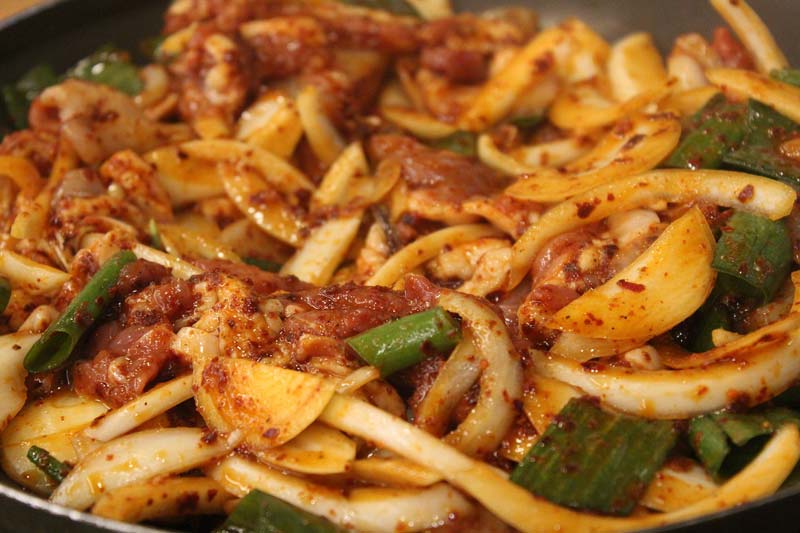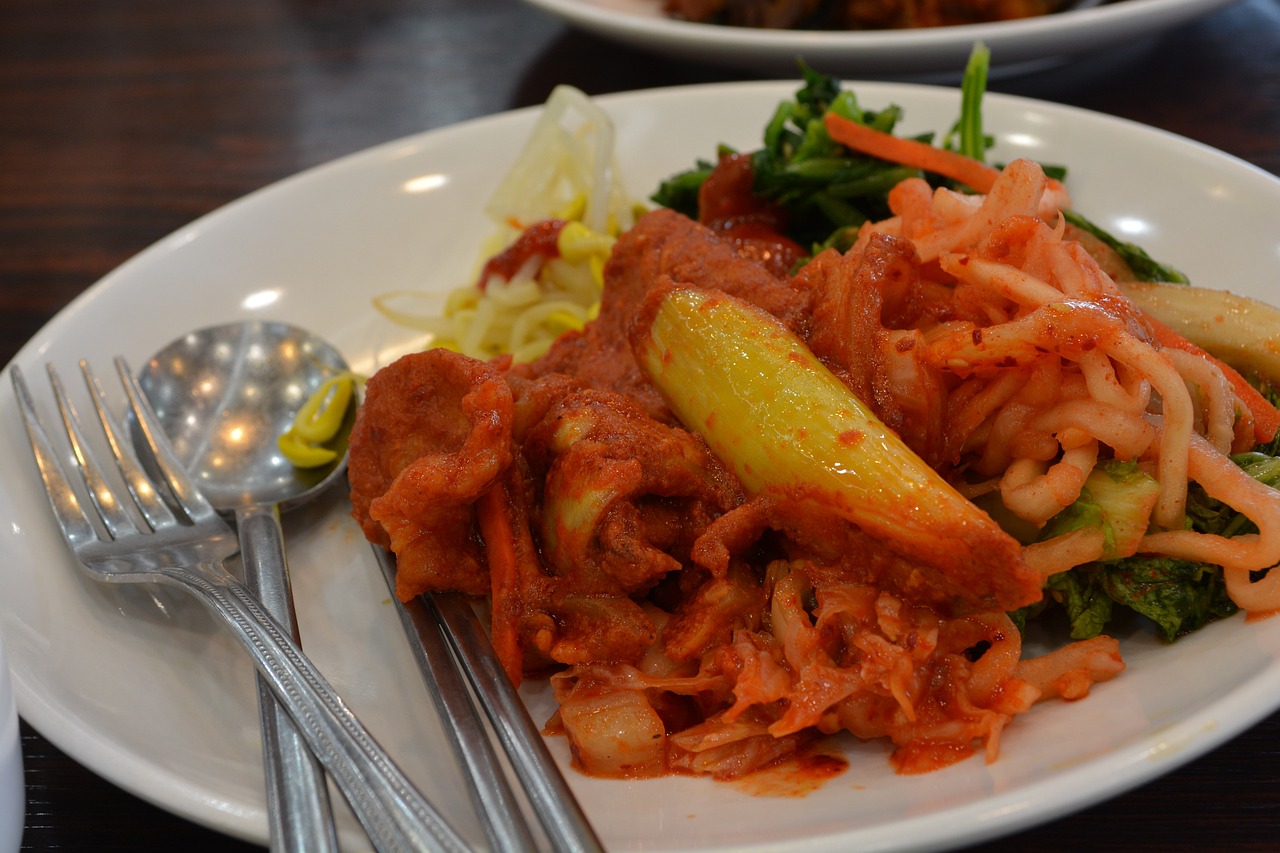What is Fermented Foods?
Since the taste and flavor of fermented foods are formed naturally by nature, they are considered to be the best health foods. Yogurt favored in the world-famous towns for longevity, wine proved for its anti-cancer and anti-aging effects, and Korean Doenjang and Kimchi are the fermented foods approved in the world for their efficacy.
Korean Fermented Foods
There are various kinds of fermented foods in Korea since we value much of health. From Jangs like Ganjang, Doenjang, Gochujang, and Cheonggukjang, and vinegar, drinks, Kimchi, and Jeotgal even to Jangajji, various kinds of fermented foods which have distinct local colors have been manufactured. This is because Jangs were made thanks to the wide bean patches, and Kimchi was made and stored for winter when it was hard to grow vegetables, and Jeotgal was developed on account of the geological feature of Korea’s three sides surrounded with sea.
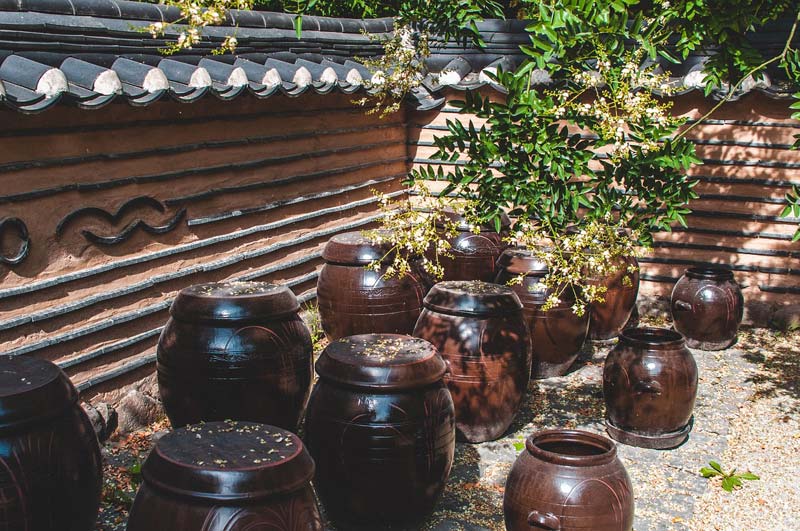
Traditional Korean fermentation jars, fot. wal_172619 / pixabay
When they made Jangs, they hanged a straw festoon around to drive away misfortune and chose an auspicious day for making them as they said, “A family’s rise and fall depend on the taste of Jangs.’. And as we see that they took care so much of the jars for the storage of Jangs as they hanged a straw festoon on the jar and attached a paper pattern for Beoseon to it in order to drive away misfortune, we can see that Jangs have been treated preciously as even a religious idol.
In the process of our Jang making, there is a stage, so-called ‘separating the Jang’ after fermenting Meju in salted water, and in which a lump of Meju and the liquid part are separated, and the former becomes Doenjang after mincing it and putting it into a jar for more ripening and the latter becomes Ganjang after the brewing.
In Japan, after fermented and pressed with a compressor, the part that corresponds to our Doenjang is thrown away, while our ancestors took in excellent nutrients through it, such as dietary fiber, lecithin, fat, and protein, etc.
Cheonggukjang is made by the process that boiled beans are put in a container such as a round basket having good ventilation and wrapped in a blanket to maintain the temperature of 35~40℃, and within 20 hours, they are turning into Cheonggukjang as they make sticky resin and give out unique smell.
The similar products with Cheonggukjang are produced in Japan, China, and Southeast Asia, and scholars refer to ‘Cheonggukjang Belt’ from the Japan’s Kyushu region, Korean Peninsula’s southern area and China’s East Coast to the Himalayas’ southern foot. Cheonggukjang is not only a digestible food since it is made by fermenting beans in a short time but also an excellent food for stamina due to the various vitamins in it, which are not contained in raw beans.
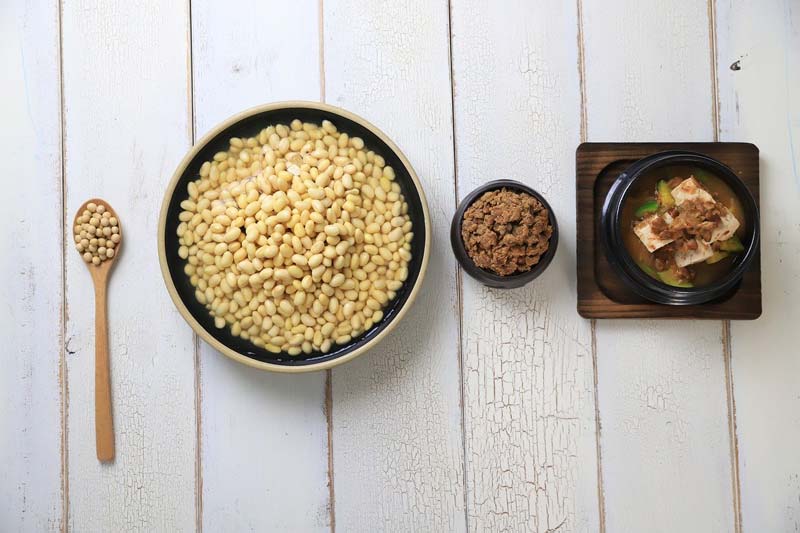
Cheonggukjang, fot. lpegasu / pixabay
Gochujang is a unique traditional food only for Koreans, and it seems to have been made first after the red pepper was introduced to Korea around the Japanese Invasion in 1592, so its history is fewer than 400 years. One of the Gochujang’s biggest features is its hot taste resulted from the constituent of ‘capsaicin’, which stimulates somatic cells to secrete enzymes and speeds up metabolism.
Last but not least, Kimchi is easily digestible due to its vegetable tissue softened during fermentation and has efficacy of eliminating heavy metals. Moreover, it helps both small and large intestinal movement to prevent constipation and has contributed in supplying nutrients for Koreans during winter with its high vitamin content.
Ganjang
Ganjang is made from beans which have plenty of protein and amino acids and was made first to satisfy the needs arisen when meat was forbidden by the spread of Buddhism. Ganjang made of beans is not only an excellent source to supply protein but a scientific food that can be stored for a long period by our ancestors’ wisdom.
Doenjang
It is made by fermenting its main ingredients such as soybean, rice, barley, wheat, or non-fat soybean or by making Meju with beans and putting it into salted water to get the fermented lump of Doenjang. Doenjang containing plenty of high-quality vegetable protein which frees us from the worry about cholesterol promotes the circulation of blood. In addition, it has anti-cancer effects, and is good for recovering the functions of liver, and detoxicates the body. One of the constituents of beans, lecithin is known for its effects of preventing senility or hypertension.
Gochujang
Gochujang made of red pepper that was introduced in Korea after the 16th century is a source of supplying the protein of beans and is a nutritious food in which savory taste, and sweet taste from the carbohydrate of glutinous rice, non-glutinous rice, and barley corn, and hot taste and red color from red pepper powder, and salty taste from Ganjang and salt used for adding the saltiness to it are harmonized with each other. The capsaicin in red pepper has anti-bacterial and anti-cancer effects, and its hot taste stimulates the skin to speed up the blood circulation and is good for diet.
Cheonggukjang
In Manchuria, the old territory of Goguryeo, horse-riding people put boiled beans under the saddle to make them naturally fermented by the horse’s temperature as an easy way to take in protein, which is the origin of Cheonggukjang. It is made from beans and the constituents adhered to rice straw and can be made in a shortest time among the fermented foods made of beans. Cheonggukjang has anti-cancer effects, and especially the Bacillus subtilisin it suppresses the growth of intestinal saprogenic bacteria.
Kimchi
Kimchi is a food that is made by salting the radish or Chinese cabbage and seasoning it with red peeper, garlic, green onion, ginger, Jeotgal, and so on, and Kimchi was initially called ‘Chimchae’ which means vegetables simply soaked in salted water. Kimchi came to have its present shape after developed drastically due to the introduction of red pepper in Joseon Dynasty. It is a grateful legacy from our ancestors, which is a good way to store vegetables for a long winter period so as to get minerals and vitamins produced from fermentation in that period.
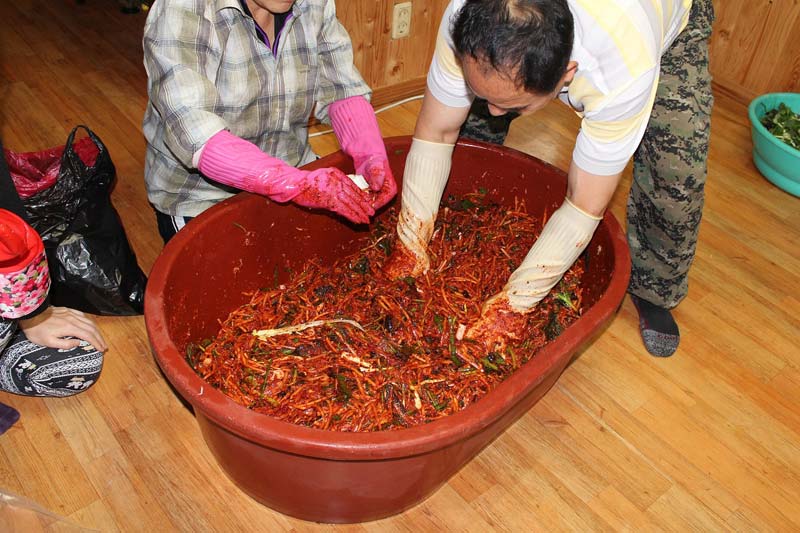
Traditional method of making kimchi, fot. 621hjmit / pixabay
Kimchi is a low-caloric food and has much dietary fiber that it can help us prevent geriatric diseases and obesity by stimulating the intestinal movement and lowering sugar or cholesterol. In addition, its efficacy has been proved scientifically such as on intestinal regulation or anticancer with its lactic bacteria produced during fermentation, so it became one of the favored foods in the world.
Jangajjis
Jangajjis are made by salting vegetables of the right reason or putting them in Gochujang for a long period. They are stored as salted for a long period, and the salty taste excites our appetite. The Jangajjis from all over the regions in Korea are said to be over 200. At the Royal Court, Jangajji was called ‘Janggwa’, and which includes ‘Sukjanggwa’ for long storage and ‘Gapjanggwa’ for instant eating.
Jeotgals
These are the foods made by salting fish and shellfish’s flesh or internal organs, or germ plasma to prevent the rotting and ripening them through degrading their tissue appropriately by self-digestion and microorganisms’ functions. As the ingredients are fermented by their own autolysins or microorganisms during the ripening period, they come to have unique tastes. After the fish, shrimp, or shellfish is salted for a while, it comes to have its own unique taste and flavor. The small fish’s bone or shrimp, or the outer shell of crustaceans gets softened while fermented, so it can be a good source to provide us with calcium.
(fermentfood/fermentfood1_2.jsp)
